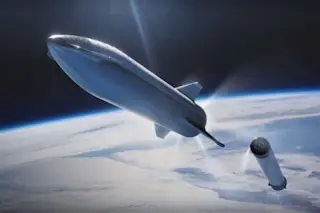Organizations all around the world are working to send humans to Mars, from NASA and other government agencies to commercial operations like Boeing and SpaceX. But the trip to the Red Planet won’t be a short one — NASA’s round-trip Mars mission, which is planned for the 2030s, could take up to three years of space travel. Humans haven’t spent even close to that amount of consecutive time in space.
Studies have already shown how spaceflight could affect everything from astronaut’s gastrointestinal tracts to their mental health. But a recent study also found that long-term spaceflight, like the journey from Earth to Mars, could seriously affect certain cells in astronaut’s immune systems.
In the study, led by scientists at the University of Arizona, researchers studied how spaceflight lasting for six months or more alters natural killer cells (NK cells), a type of white blood cell that can kill cancer cells ...














